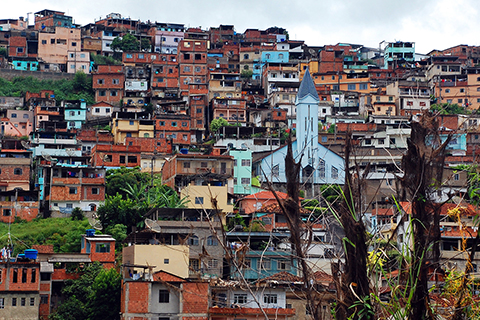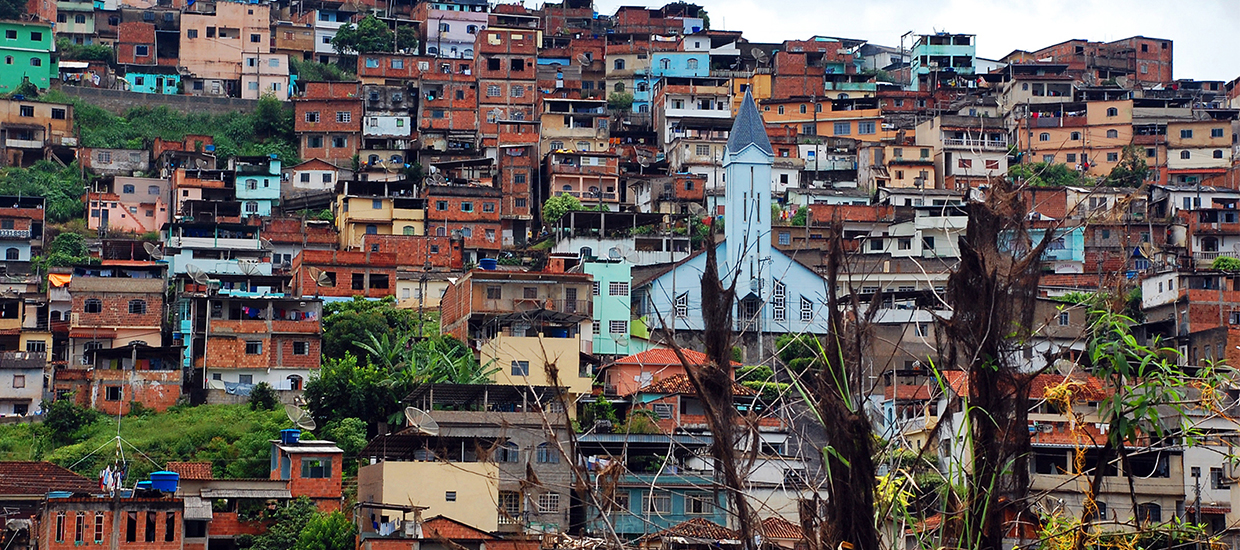Latin America is extremely diverse in terms of race and ethnicity. Intuitively, this should lead to high levels of descriptive representation in the region. That is, one would expect the voters’ division along the ethnoracial lines and their support for political candidates who share their ethnic or racial characteristics. Nevertheless, the ethnic or racial differences have not played an important role in the region, with few exceptions, such as the election of an indigenous president in Bolivia. This fact is especially problematic given the unequal access to resources and services among members of different ethnoracial groups in many Latin American societies, including the Dominican Republic (DR). In this article, Danilo Antonio Contreras presents the results of an original research that explains why issues related to ethnoracial identities have not played significant role during elections in the DR. One of Contreras’ main findings is that in the context of weak ethnoracial group identities and high stratification, marginalized groups prefer to avoid self-identification with subordinate ethnic and racial groups and favor white candidates. The argument is based on rigorous application of survey research and provides an important contribution to the literature on electoral preferences in Latin America, Afro-Latin population and ethnic/racial identities.
Abstract: This article examines the effect of perceived ethnoracial identity on electoral politics in the Dominican Republic and provides an explanation for the low salience of race and ethnicity in political behavior in Latin America. I argue that, under certain conditions, individuals will deal with ethnoracial discrimination and stratification through exit rather than voice— that is, they will reclassify their way out of marginalized ethnoracial categories instead of voting for candidates or parties that share their ethnoracial identities. This tends to be the case where ethnoracial group identity is inchoate and group boundaries are permeable. I also argue that where ethnoracial group loyalties are weak and immigration is widespread, citizens may emphasize national origin over race or ethnicity. Findings from an original field experiment and survey in Santo Domingo show that candidates did not consistently support candidates that shared their ethnoracial attributes, but they did slightly favor candidates perceived as white. Respondents strongly discriminated against candidates of Haitian origin.
Starting from the mid-twentieth century, populism and the development of democracy go hand in hand in Latin America. Populism is defined as an ideology that considers society to be inherently divided into two antagonistic groups, the people and the corrupt elite. Numerous populist actors from Néstor Kirchner in Argentina to Hugo Chávez in Venezuela have risen to power employing this divisive rhetoric. Although scholars have extensively studied this phenomenon, they have not come to the consensus about its effects on the quality of democracy. Huber and Schimpf provide an insightful analysis on the effects of populist actors depending on whether they are in opposition or in government. For example, while in opposition, populist actors provide an opportunity to voice concerns of under-represented groups of population, as happened in Bolivia before the election of Evo Morales as president. Naturally, this presents a positive effect on democracy. While in government, however, populist leaders tend to negatively affect the system of checks and balances, thus diminishing the democratic quality. Overall, the article presents a rich overview of different effects that populism may have on democratic procedures and explores the applicability of quantitative methodology in the studies of populism.
Abstract: This article examines the influence of populism on democratic quality in Latin America. It draws on findings of qualitative work on this question as well as a theoretical framework by Cas Mudde and Cristóbal Rovira Kaltwasser to test whether the assumptions and results of both are applicable in a comparative study. It is expected that populist actors have a negative impact on democratic quality when they are in government, but that they positively influence democratic quality when they are in opposition, where they can function as a corrective. Further, it is expected that these effects vary depending on the level of consolidation. A linear mixed-effects model and data from eighteen Latin American countries in the period 1995–2009 was used to evaluate the hypotheses. Generally, it was found that populist actors in opposition have a large positive influence on democratic quality and that populist actors in government have a negative influence.
As of November, 2016, Zika is no longer considered a public health emergency by the WHO, but in a recent article in Science, Gretchen Vogel explains why we may not want to celebrate just yet. With a focus on Brazil in comparison to other Latin American countries affected, Vogel outlines the current state of public health knowledge on this pesky pathogen.
Excerpt: It may have sounded like good news. Two weeks ago, the World Health Organization (WHO) announced that the Zika epidemic was no longer a Public Health Emergency of International Concern, a designation reserved for acute threats that Zika received in February. WHO's downgrade came after several months of dropping case numbers. But as the agency was keen to point out, the change just means that Zika has evolved from a cross-border emergency to another long-term public health challenge that needs the world's attention. The virus is now firmly entrenched in Latin America, which is already battling several other mosquito-borne diseases. Meanwhile, fundamental gaps remain in scientists' knowledge. They don't know how many people Zika infects silently, whether infection leads to long-term immunity, or how big a threat it poses to babies in the womb. And although several candidate vaccines have entered initial human trials, a widely available product is still years away. As Albert Ko, an infectious disease expert at Yale University, puts it, “We have no prevention, no treatment, and no effective ways for counseling women on risks.”
Matón? Valentón? Bravucón? A bully by any other name remains a worldwide problem, and Latin America, with a documented problem of school violence, is no exception. Delprato, Akyeampong, and Dunne take a look at cognitive and behavioral outcomes of bullying in fifteen Latin American countries in a recent article in the International Journal of Educational Development. Spoiler alert: the impact of bullying on learning varied significantly according to country. Check out their article to read more about the factors that influence the effects of bullying in Latin America, as well as the implications of the authors’ research for education and policy.
Abstract: We examine the impact of bullying on learning and non-cognitive outcomes for sixth grade students in 15 Latin America countries using data from the Third Regional Comparative and Explanatory Study (TERCE) learning survey. We apply OLS and propensity score matching to attenuate the impact of confounding factors. Matching results show that students being bullied achieve between 9.6 and 18.4 points less in math than their non-bullied peers whilst in reading between 5.8 and 19.4 lower scores, a 0.07-0.22 reduction in the standard deviation of test scores. Thus, substantial learning gains could be accomplished by anti-bullying policies in the region.
A desire to escape violence is one of the key factors driving unaccompanied child migration from Central America to the United States, yet as Kate Swanson and Rebecca Maria Torres illustrate, the migratory journey itself is often a violent experience. This article tells the story of child migration through the Americas, detailing how the migrants’ experiences are shaped by various forms of violence. Using children’s stories and artwork, as well as data collected from workshops with migrant communities, Swanson and Torres highlight youth perspectives on and perception of the violence. In doing so, the authors illuminate the various forms of violence these migrants faced, including the violence caused by U.S. anti-immigration policies. In conclusion, Swanson and Torres argue for “a more spatially expansive understanding of violence” so as to reflect how state immigration policies “extend far beyond national borders to affect children’s lives.”
Abstract: In recent years, there has been a dramatic increase in the number of unaccompanied migrant children attempting to enter the United States. In 2014, total numbers peaked at 68,000 apprehensions, mostly from Central America and Mexico. Since then, rising immigration enforcement strategies within Mexico have decreased the ability of unaccompanied migrant youth to reach the US border. However, underlying factors driving child migration have not changed. Children continue to flee high levels of violence, particularly from El Salvador, Honduras, and Guatemala, which are currently among the most violent nations in the world. Yet, violence does not end for youth once they leave the borders of their countries; as youth ride buses, trains, boats and trucks north, they continue to encounter it along every step of the way. Due to increasing militarization and punitive immigration policies in the United States, migrant children contend with further violence when they cross the US/Mexico border. In this paper, we examine how varied nuanced manifestations of violence shape migrant children’s lives and experiences. While youth may be able to escape immediate and corporeal violence, we explain how different forms of violence influence not only their decisions to leave, but also their journeys and encounters with Mexican and US immigration policies. We argue for a more spatially expansive understanding of violence that considers how state policies and practices extend far beyond national borders to negatively affect migrant children’s lives.
For African Americans, Haiti has long been a cause for celebration but also for concern. As the first and only country to be borne of a successful slave revolt it was an emblem for black freedom, but it also had a poor reputation as a symbol of the failure of black governance. In “The Transnational Work of Moral Elevation” Brandon Byrd illustrates how, from the Reconstruction period on through to the mid-twentieth century, black women’s organizations in the United States responded to this latter concern by promoting the reform of Haitian life and culture. In so doing, Byrd argues, the women who acted as “agents of civilization” in Haiti became leaders the black freedom struggle at home because of the way that they were ostensibly strengthening the nation that was “a gauge for black potential.” Yet as Byrd demonstrates, these women unwittingly reinforced existing hierarchies and international criticisms of Haiti, and in doing so contributed to imperialist projects in Haiti. It is an example, Byrd notes in conclusion, of how it is not just Haiti’s foreign foes that have impacted the country, but how its friends have done so as well.
Abstract: (In lieu of an abstract, the following is a brief excerpt from the article): In the past several decades, the public lives of black women in the late-nineteenth to mid-twentieth-century United States have garnered significant scholarly attention. Works focusing on their participation in women’s suffrage groups, religious institutions, and political organizations such as the National Association of Colored Women (NACW) show how black women resisted the intertwined realities of racism and sexism. In addition, some scholars have begun to broaden our understanding of African American internationalism by drawing attention to the global outlooks of black women rather than prominent black men during the Jim Crow era. Compelling works demonstrate that elite and middle-class black women in the NACW, the Women’s International League for Peace and Freedom (WILPF), and other organizations studied social conditions abroad and concluded that white supremacy was a universal problem. Still, despite their strong insights into the global outlooks and activism of black women, this body of scholarship has not yet provided a definitive answer to two essential questions: How did black female professionals think about their relationship with people, especially women, of African descent abroad, and in what ways did they envision the African diaspora as a resource in their struggle for racial progress and gender equality across the nineteenth and twentieth centuries?...





